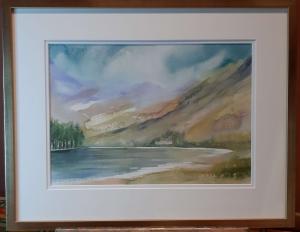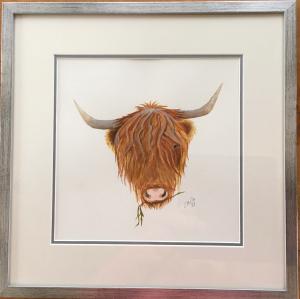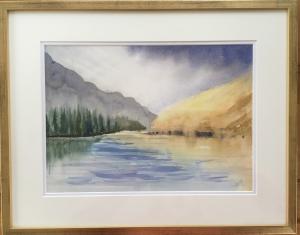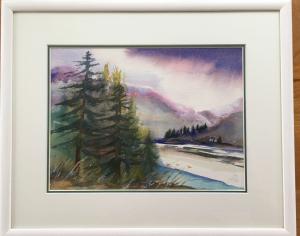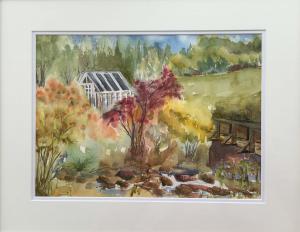A day in the life of Bern Ross
Some of the most valuable time in my day is when I'm waking up. It's in my waking moments when I clearly see pictures, colours and ideas in my mind's eye that inspire me to paint. When a mountaineer is asked why he does it, the answer is likely to be, "Because it's there." The same thing applies to why I paint a picture: it is there in my mind's eye and I have to create it to look at it properly.
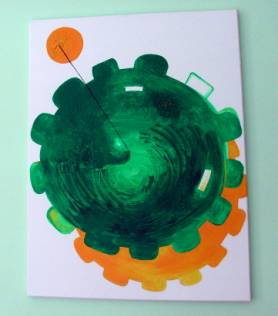
Dreaming in colours - this is how ‘Playful Cartwheels' came about
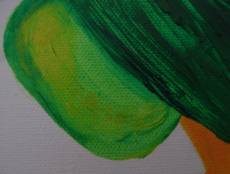
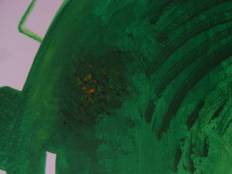
Alas I cannot go straight to work in my studio as there are domestic matters, like my hunger and my husband's morning tea etc., to see to, but as soon as the opportunity is within reach I'll be at my easel mixing colours from the few large tubes of acrylic primary colours that I use.
I apply the paint with a large brush or palette knife, if I'm feeling conventional – which isn't very often. More usually I use an old credit card to scoop and scrape the colour around until it's in the right place and from there I'll add more colour or texture as I think fit. I will have previously prepared the canvas with gesso or a textured surface, perhaps with a ‘sky' or horizon or another block of under-painting. Possibly all the basic elements will be already in place, though if this is the case they'll be very rough indeed. I prefer to work by instinct than to a plan. Adding the colour-textures, final touches and details are what I love doing best.
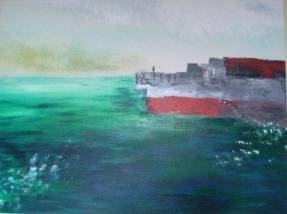
‘Seaward Dreaming' is a painting that grew from my exploration with colours
‘Seaward Dreaming' started with some long worms of cobalt blue squeezed directly onto the canvas. The figure looking out to sea in the distance, and the singular detail of the seagull in the foreground were two great inspirations that seemed to naturally fall into place and ‘made' the painting exactly right.
I'm a multi-tasker and tend to work on more than one creation at a time. This might be two different paintings or a picture and a BoxyBag. Being efficient with my hard-earned paint, I sometimes use a left-over colour for developing an area on another painting. More often I'll suddenly find I've painted an important area that needs to dry and requires more thought. I need to look at a painting many times, stand back, think about it, sleep on the idea, view it again in a different light and in a different mood, touch it up, change a bit here and a colour there until I'm completely satisfied with it.
If I haven't been called away to help with the DIY, go shopping or do something else expected of a wife and mother, then I've usually got a sewing or writing project to pursue as well as my painting. I really appreciate having a room where my creative work can all be ready to hand so that I can alternate and pick up where I left off.
After a light lunch there is just time to snatch ten minutes to uncover the acrylic paint on my palette, previously protected with cling-film, and use it to create a small area of texture on a certain focal point.
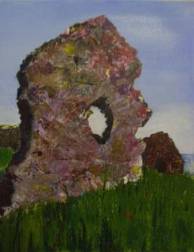
‘Still Standing' required some thick paint to achieve the effect
Soon it's time to go outside and help in the garden. Manual work is always more conducive to creative thought than is a job requiring mental work: worth remembering when you need to earn some dosh. I enjoy the chance to get lost in the undergrowth because – again – it's thinking time. The shot of oxygen into the brain really does solve problems; and I think enforced distractions like this are a necessary part of every artist's life. I return to my painting with new vigour, sometimes completing the picture with a final, delicate, carefully considered brushstroke.
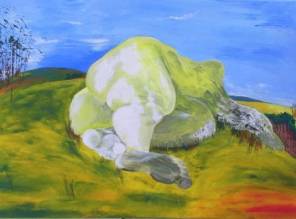
‘Too Hot, Can't Go On': I knew it was finished with the few blades of grass on the left.
Sometimes I'm able to take a canvas to my artist friend who looks objectively at the work and makes suggestions. I feel very honoured to have this opportunity (although I might not do as I'm told!) and it's a treasured part of any artist's working day.
Back at home it's my responsibility to put the main meal on the table so I've streamlined the weekly menu to require minimal daily preparation – I find it difficult to get my head around cooking when I want to be painting instead, so the less thought required the better. Evening meal out the way I'll take another look in my workroom at what can be done tonight. Yes, some of the foliage in ‘Mother's Instinct' needs to be darkened.
Last but not least I'm sitting in the lounge ‘being sociable'. The TV is on and I'm interacting with my spouse but my sketchpad is on my lap and I'm drawing something, anything. My sketches occasionally develop into paintings but usually they're simple practise in proportions or experiments in design.
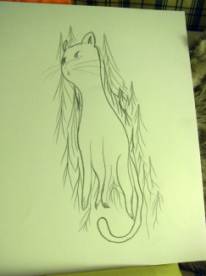
Cat in the Firs - experiment
Since returning to this vocation after being a creative writer I'm finding myself becoming far more observant. I look at what people like in their homes so that I can create something attractive. I look carefully at my subjects – is that chimney pot really round? Is the sea really blue? How many colours are in that stone? Painting and drawing are thought to be very relaxing pastimes but they are also very mentally demanding, requiring deep concentration: if I've painted enough I sleep well at night and wake with colourful ideas. The challenge of conveying what I see and feel into a painting that offers meaning and intrigue to art lovers seems to be consuming most of my waking hours – and I love it.
© Bern Ross


